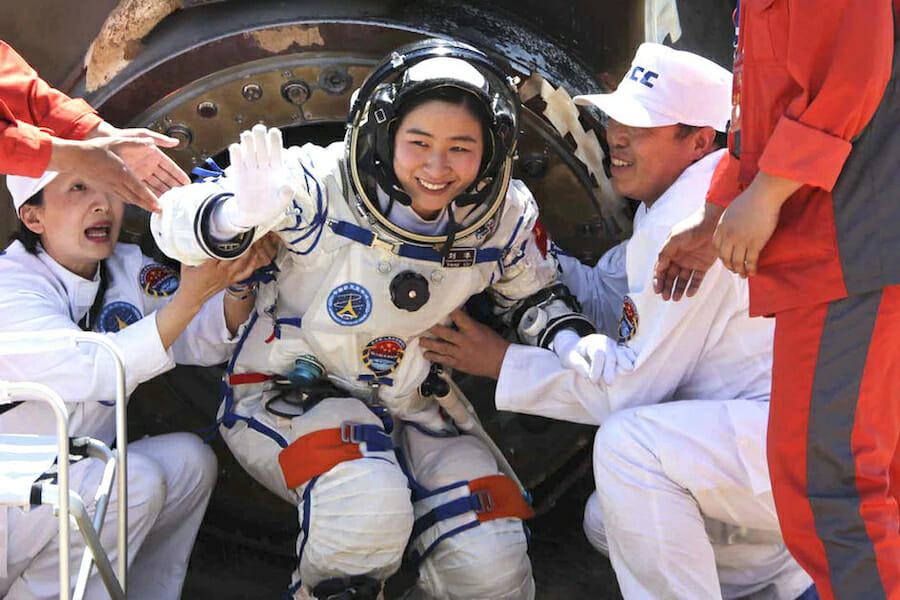
Tech
After China’s Belt and Road Initiative, a Space Initiative?
SHENZHEN, China – “After the Belt and Road Initiative, I think China has a space initiative in mind. China has invited developing nations to conduct experiments on its space station planned to be on the orbit in 2022, has signed an agreement with the UN, and does not neglect any possibility to conclude an agreement with countries that have expertise on the peaceful use of the outer space. For instance, in July 2017, it signed a memorandum of understanding with Romania, which possesses such expertise, and, geopolitically, it falls along the route of the Belt and Road Initiative,” said Dumitru-Dorin Prunariu, a Romanian cosmonaut and diplomat.
As an annual delegate to COPUOS, Prunariu is very familiar with China’s space achievements: “China is strikingly advanced in space activities and focused on manned human space flights. I felt from the beginning China’s huge potential in space. When I was still the president of the Association of Space Explorers, I personally insisted to have Chinese astronauts become members of ASE and to hold the ASE congress in Beijing in 2014, to start getting to know each other better. The first Chinese astronaut, Yang Liwei, was elected as a member of ASE Board. Time showed indeed that China is promoting space activities and open to develop space projects as well as advanced technology and science, with the purpose to ensure national security and to gain its place, prestige and recognition on the global stage, as a strong space-faring nation with a high level of technology.”
Wu Ping, Deputy Director General of China Manned Space Agency, presented the project to the 59th session of the Committee on the Peaceful Uses of Outer Space (COPUOS) at the UN in Vienna in June 2016. Under the agreements, UNOOSA and CMSA will work together to enable United Nations member states, particularly from developing countries, to conduct space experiments on board China’s space station, and to provide flight opportunities for astronauts and payload engineers. China and the UN will promote international cooperation in human space flight and other space activities, increased awareness of the benefits of human space technology and its applications, and capacity-building activities in space technology.
The Chinese space station, Tiangong 3, is currently under development and is expected to be operational around 2022. It will have a core module and two experimental modules, and can be expanded further. The modules are scheduled to be sent into space between 2020–2022. It will be capable of accommodating three full-time astronauts and up to six during rotation periods. The station will also accommodate the Chinese future Xuntian space telescope.
With its advanced technology and multi-purpose onboard facilities, the station could provide opportunities for UN member states to conduct microgravity experiments on physics, biology, and life science as well as Earth observation.
The UN signed several agreements with various Chinese institutions ranging from disasters management and emergency response, the use of space-based data, and the infrastructure of disasters management and emergency response, as well as cooperating in exploration and innovation. Prunariu stresses that “only cooperation in various fields, including space, can make nations know each other better, remove suspicion and gradually build mutual trust.”
The CMSA hopes for broadened collaboration with other countries and international organizations under the framework of the agreement, on the principle of peaceful uses of outer space, equality and mutual benefit, and joint development.
It is unlikely that there will be cooperation between China and the US for the moment. In 2011, Rep. Frank Wolf inserted a clause into the US spending bill to prevent NASA or the OSTP (White House Office of Science and Technology Policy) from using federal funds “to develop, design, plan, promulgate, implement or execute a bilateral policy, program, order, or contract of any kind to participate, collaborate, or coordinate bilaterally in any way with China or any Chinese-owned company.”
However, Jeffrey Manber, CEO of NANORACKS, a private commercial company that provides hardware for the International Space Station, explains that there is always a way where there is a will: “The Canadians, Russians and Americans would have worked with the Chinese on the ISS but this law forbids it. When we started to work, we felt this amendment does not apply to us because we are a commercial company, we are not using tax-payers’ money. We have customers from 30 nations who pay us for services. We went to Obama administration and asked to engage the Chinese, and they gave us permission. Charles Bolden, administrator of NASA at the same, wrote a letter to the Congress saying this complies with the Wolf amendment, NASA was not involved, no technology transfer.”
China is gradually achieving excellence in its space programs and it has the capabilities to implement outstanding space projects. The wide range of programs, the long term planning and the openness to international cooperation makes it a unique space-faring country.

